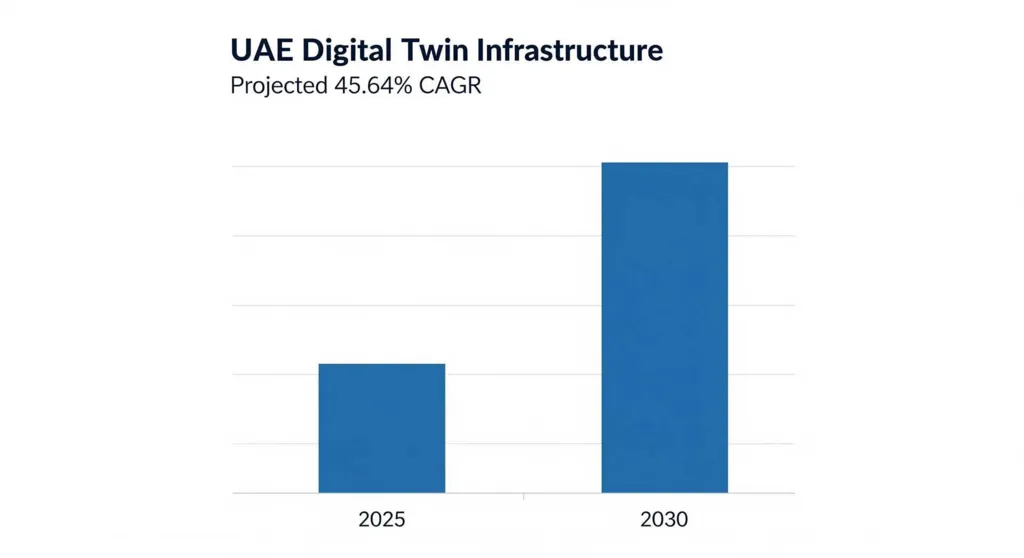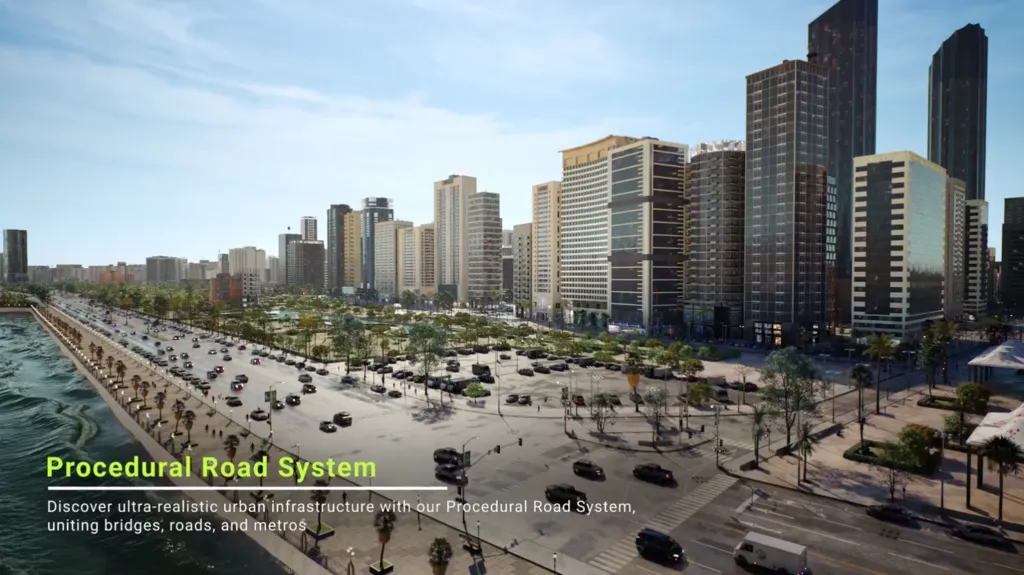Abu Dhabi Digital Twin Infrastructure Scales with UAE’s 45.64% Market Growth
As cities grow more complex and data-rich, the need for real-time, immersive infrastructure management is becoming urgent. From urban congestion to energy optimization, traditional planning tools often fall short in capturing the dynamic nature of modern environments.
Digital twins are virtual replicas of physical assets powered by live data that offer a solution to this. They enable simulation, monitoring, and predictive insights across sectors, making them indispensable for smart city development, real estate, and public services.
In the UAE, this demand is translating into rapid market expansion, with digital twin technologies projected to grow at a compound annual growth rate of 45.64% by 2030. Within this national surge, Abu Dhabi Digital Twin Infrastructure is emerging as a strategic focal point.

Urban Modeling and Smart City Integration in Abu Dhabi
Digital twins are increasingly central to smart city development, enabling real-time simulation of traffic, energy grids, public services, and environmental metrics. Abu Dhabi’s infrastructure, characterized by planned urban zones and high-tech readiness, offers an ideal environment for scalable twin deployment.
These models allow city planners to test scenarios, optimize layouts, and monitor assets dynamically, bridging the gap between physical infrastructure and digital oversight.
Case Study: PropVR’s Abu Dhabi Twin Models
One example of Abu Dhabi’s digital twin momentum comes from PropVR, a spatial technology firm that has modeled cities including Abu Dhabi using procedural workflows. By converting GIS data, 2D maps, and street-level imagery into immersive 3D environments, PropVR demonstrated how urban landscapes can be visualized in days rather than months.
Their work supports masterplan visualization and stakeholder engagement, offering a glimpse into how Abu Dhabi Digital Twin Infrastructure can evolve across real estate, tourism, and public planning.
Sectoral Adoption: Real Estate, Utilities, and Public Services
Digital twins in Abu Dhabi are gaining traction across multiple sectors. In real estate, interactive models allow buyers and investors to explore units, amenities, and layouts remotely—enhancing confidence and accelerating decision-making. In utilities, operational twins monitor water, energy, and lighting systems in real time, enabling predictive maintenance and resource optimization. Public services benefit from simulation tools that improve emergency response, traffic flow, and infrastructure resilience.
Technology Stack: AI, IoT, and 5G Enable Real-Time Twins
The backbone of Abu Dhabi’s digital twin infrastructure lies in its integration of AI, IoT sensors, and 5G connectivity. These technologies enable high-frequency data collection and low-latency processing, essential for real-time modeling and analytics. The UAE’s National AI Strategy 2031 and Big Data Ecosystem initiatives provide a framework for scaling these capabilities, with Abu Dhabi positioned to lead regional implementation.
Future Outlook: Abu Dhabi’s Expanding Twin Ecosystem
As the UAE accelerates its digital transformation, Abu Dhabi Digital Twin Infrastructure is expected to play a pivotal role in shaping the future of urban management, asset monitoring, and immersive engagement. With growing interest from developers, municipalities, and tech innovators, Abu Dhabi is not only adopting digital twin technology—it’s helping define its regional applications. From smart buildings to city-scale simulations, the emirate’s infrastructure is ready to support the next wave of digital twin evolution.
Also Read: Abu Dhabi’s Construction 4.0 Push: AI, Robotics & Prefab in Economic Cities








